| Revista Umělec 1999/3 >> Art Is Good For You | Lista de todas las ediciones | ||||||||||||
|
|||||||||||||
Art Is Good For YouRevista Umělec 1999/301.03.1999 Tim Gilman-Ševčík | new york | en cs |
|||||||||||||
|
"Martha, Bob, Charlotte, Eileen, Angela, Jared... I’m in my closet writing names on each of the bricks in the patch of wall where the plaster has fallen off. My bricks. Can’t say I’ve felt attached to a brick before, but now that I know they’re in there, with their names on them, waiting for me to come home and hang my coat, I’m sure that I’ll think of them more often.
Many of Rob Pruitt’s 101 Art Ideas You Can Do at Home, showing at Gavin Brown’s Enterprise, including this one (I forget which number it was), function as antidotes to alienation. American rootlessness (apparently Americans move an average of 15 times in their lives) and the global economy will keep us moving, but naming bricks, or plants, or pickles, as Pruitt variously suggests, can transmute the impersonal and standardized into the known and welcoming. It’s almost a New Age religious experience walking through the jumbled domesticity of the gallery in which Pruitt has executed a selection of his own ideas from the little book he wrote that lends its name to the show. Pruitt has almost made a home out of the austerity of Chelsea gallery space. At the door, you are well met by a phalanx of inflated undershirts, stretched over fans, which greet you in the many languages, which are written across the front of them. A fountain filled with goldfish protruding from one wall is built from boxes of bottled spring water, punning on, but at the same time following highbrow assertions about the necessary integrity of the materials used in sculpture. Across from the fountain the attendant’s desk is surrounded by wallpaper made of Pruitt’s transcribed answering machine messages. In one desk drawer, fluorescent fish tank gravel makes a “secret Zen garden,“ which does seem to radiate a pacifying effect. Blue adhesive bubble letters label each realized idea with the number and prescription of the corresponding idea in the book, making the gallery into a how-to demonstration. The ideas chosen and the methods of their execution are quirky and personal, but seem arbitrary, giving the sense that each idea is open to innumerable possible manifestations. Just because Pruitt turned “draw yourself into your favorite comic strip“ into a beautiful wall-sized mural with a little Rob Pruitt as the only member of the Peanuts gang with a five o’clock shadow, doesn’t mean you can’t draw yourself into “The Simpsons“ or “Superman,“ you can, and it might even make you feel good. Pruitt infuses his work with sincerity, humor, and smarts which give a feel-good effect without the Hollywood golden glow that usually accompanies upbeat schlock. But though the work comes at you light and witty, it conceals roots hearkening back to sixties conceptualism. To paraphrase Lawrence Weiner: the artist can make the work, have someone else make it, or not make it at all. Pruitt’s little book is as spare and innocuous as Weiner’s early catalogue/books. In both a few words in black on an empty page open up into an expansion of thought and possibility when read. But the difference, the update from the deadly serious overtones of earlier conceptualism is the way the work, being true to its time, is anti-manifesto. Rather than incestuously bringing real world practices into art battles, it proposes a confluence of art and life flows, where the fully art and the fully home can meet and commingle. With a backward glance it obliterates the differences and separation between the two which were felt in formalism and presentation. Make a painting using make-up, Pruitt writes. His version of it, a pudgy puppy on canvas with baby-doll eyes and a lustrous rouge and blush coat, hung on a wall that could easily display Janine Antoni’s Butterfly Kisses, which she made by blinking mascara-laden eyelashes on paper, as another way of carrying the idea out. Did Pruitt trawl art history books and journals for ideas? Or Ladies Home Journal? Or both? He makes no needless claims of originality, letting personality fill out the framework of the piece’s appearance, whether it is his piece shown, yours at home, or the work of another artist (or homemaker) roped in by association. Some of the ideas, like drawing faces on old light bulbs to make sculptures or scribbling on bananas to see your marks brown seem, more like after-school projects for glue-sniffing adolescents. Others, though, immediately call to mind strong works by known artists (“spread glitter“ like Kabakov’s confetti, “make a mix tape,“ like Tiravanija’s open gallery jam sessions). The ideas are like recipes, it’s up to the cook to ruin dinner or make a feast. Could each of them generate either comforting domestic kitsch or perplexing museum art? And without context and popular opinion are the two so distinguishable? Though they may come off as dumb and fuzzy at first glance, they go straight to the sources of art-making; finding inspiration, coping with and incorporating yourself into the overwhelming, whirling world of visual culture, and the projection of the inner and personal into the outer and presentable. Whether they are great, dumb, poetic, funny, or wise (and they are), they represent possibility, and declare all ideas to be full of the promising potential to succeed or fail at any level. "
01.03.1999
Artículos recomendados
|
|||||||||||||
|
04.02.2020 10:17
Letošní 50. ročník Art Basel přilákal celkem 93 000 návštěvníků a sběratelů z 80 zemí světa. 290 prémiových galerií představilo umělecká díla od počátku 20. století až po současnost. Hlavní sektor přehlídky, tradičně v prvním patře výstavního prostoru, představil 232 předních galerií z celého světa nabízející umění nejvyšší kvality. Veletrh ukázal vzestupný trend prodeje prostřednictvím galerií jak soukromým sbírkám, tak i institucím. Kromě hlavního veletrhu stály za návštěvu i ty přidružené: Volta, Liste a Photo Basel, k tomu doprovodné programy a výstavy v místních institucích, které kvalitou daleko přesahují hranice města tj. Kunsthalle Basel, Kunstmuseum, Tinguely muzeum nebo Fondation Beyeler.
|








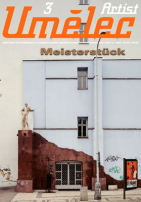















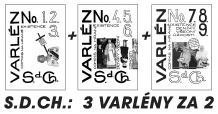




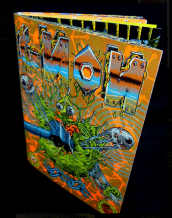
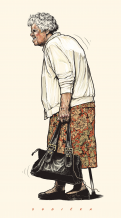
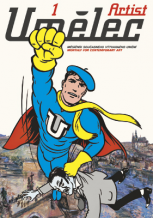



 New book by I.M.Jirous in English at our online bookshop.
New book by I.M.Jirous in English at our online bookshop.
Comentarios
Actualmente no hay comentariosAgregar nuevo comentario